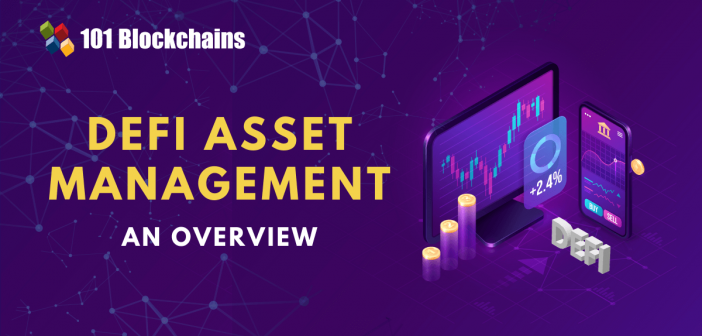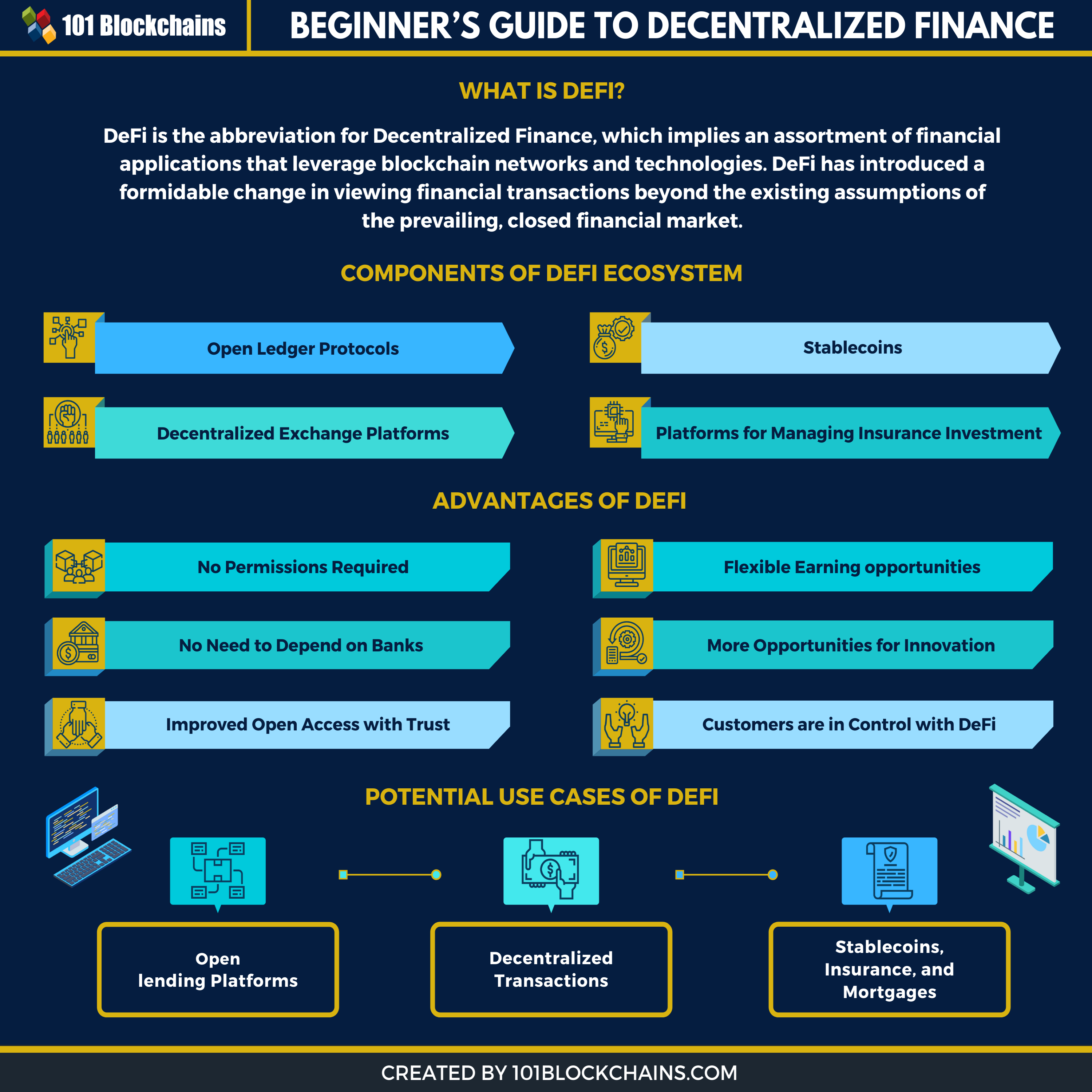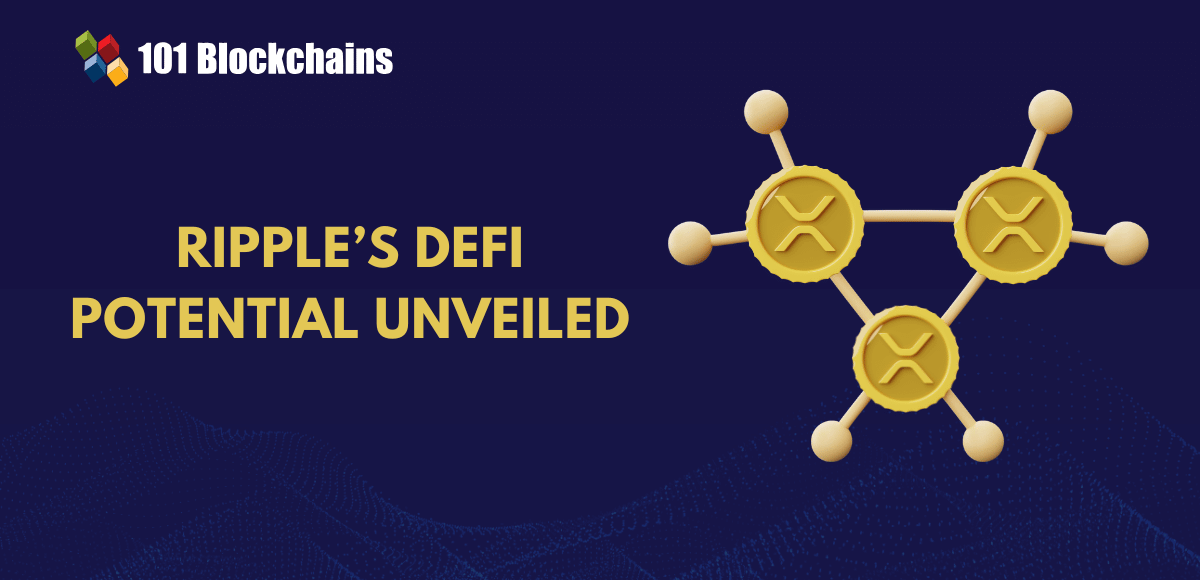Learn how blockchain truly works, master key definitions, and uncover what makes smart contracts so "smart." Dive into the fundamentals, gain valuable insights, and start your blockchain journey today!

- Decentralized Finance
Diego Geroni
- on July 06, 2021
An Overview on Asset Management in DeFi
The new web landscape has offered considerable freedom, flexibility, and power to general users. Now, any individual could be their own bank and manage their assets with improved transparency and control over their investment decisions. In addition, the arrival of composability in DeFi projects and the creation of new financial products by investors present a formidable indication of the growth of DeFi asset management.
The growth of decentralized asset management has opened up new opportunities for creating sophisticated financial solutions. At the same time, decentralized management of assets also promotes the flexibility of investing in real and virtual assets with ease. Let us discover more about the scope of asset management in DeFi in the following discussion.
Want to learn about the DeFi Fundamentals? Enroll Now in Decentralized Finance (DeFi) Course
What is DeFi?
Prior to the main focus of this discussion, it is important to reflect briefly on the fundamentals of DeFi itself. DeFi or decentralized finance basically refers to financial services implemented on the blockchain. They do not involve any central authority. As a matter of fact, the definition of DeFi is an important requirement to understand “what are DeFi assets” and how they can transform the financial landscape altogether. DeFi actually takes the conventional elements of the existing financial system and replaces the intermediaries with smart contracts. It is also reasonable to consider DeFi as a blend of conventional banking services and blockchain.
Decentralized Finance or DeFi relies heavily on a decentralized infrastructure for its operations. So, you could find the need for using the Ethereum blockchain that can help in building decentralized applications. The majority of DeFi protocols leverage the Ethereum blockchain for their operations. On the other hand, some protocols have already shifted to other blockchain networks for the benefits of scalability and speed. However, DeFi does present some favorable promises for the growth of decentralized asset management in the long run.
Want to explore in-depth about DeFi protocol and its use cases? Enroll in Decentralized Finance (Defi) Course- Intermediate Level Now!
To know more about decentralized finance, check out this graphic –

Want to explore an in-depth understanding of security threats in DeFi projects? Become a member and get free access to DeFi Security Fundamentals Course Now!
Excitement for DeFi and Its Role in Asset Management
The potential of DeFi caught the attention of asset management professionals and investors in early 2019. In addition, DeFi brought many other new attributes such as protocols, derivatives, composability, decentralized exchanges, and Security Tokens. All of these factors have presented prolific indications when combined together for creating innovative solutions for investors.
At the same time, they also offered the foundations for considering the adoption of DeFi asset management. How? The conventional financial landscape focuses largely on life, goals, risk profile needs, and income for investment decisions. Based on these factors, investors could find the right places to put in their money. The striking factor, in this case, refers to the comparatively manual process alongside the burden of standardization. Therefore, it is common to find different types of clients in similar investments.
Over the course of recent years, many new automated advisors such as Betterment, Personal Capital, and Wealthfront have made a mark in the financial sector. At the same time, self-investing portals such as Robinhood have shifted the control of investment management to the investor. Now, index funds and algorithms dominate the investment and asset management market. All of these implications combined with the beneficial propositions of DeFi have been the inputs for the growth of asset management in DeFi.
Prior to the arrival of DeFi, crypto trading was considered the next big alternative to conventional financial systems. Subsequently, with the growth of Ethereum usage along with ERC20 tokens, decentralized exchanges emerged as an alternative to the pitfalls and hazards associated with centralized exchanges.
Apart from the concern of decentralized exchanges, the aspirations for hedging, margin, borrowing, and lending trade also emerged prominently. Simultaneously, users encountered the need for incentive mechanisms associated with staking and liquidity. As a result, DeFi started becoming more competitive.
Build your identity as a certified blockchain expert with 101 Blockchains’ Blockchain Certifications designed to provide enhanced career prospects.
The Rise of Decentralized Finance Asset Management
The complications associated with DeFi created profound ambiguities regarding the answer to ‘what are DeFi assets’ and how they work. Assets in the real world could now be tokenized and traded in DeFi protocols with ease. So, you can easily find out that such assets qualify as DeFi assets. Now, it is inevitable to wonder about the traits in DeFi which work in favor of asset management. The three important characteristics through which DeFi empowers asset management are transparency, trustlessness, and composability.
-
Transparency
Transparency is actually a myth in the world of traditional finance. Presently, extended settlement times ranging up to almost 2 to 3 days alongside the general quarterly reporting leave little room for transparency. Owing to these factors, asset managers have to report public displays of their assets on a monthly or quarterly basis. So, if you invest in a particular asset, you could not be clear about the status of the asset at a specific instance. You could only find out details about the performance of the fund and the asset managers in the previous quarter.
Decentralized asset management allows comprehensive visibility at the block level for holdings of an asset or token. It also offers you clear insights into the asset’s performance and the asset manager. One of the examples of using decentralized finance in asset management for transparency is the Melon Protocol.
In association with Avantgarde Finance, the Melon Protocol has devised the functionalities for easier asset creation. In addition, the Melon Protocol also features reporting, trading tools, manager incentives, and investment mechanisms. Any Ethereum wallet user could access their hedge fund or private investment funds easily.
The Set Protocol is also another example of ensuring transparency with DeFi asset management. First of all, Set Protocol introduced Token Sets, with the first entry being the Robo-advisor tokens. These tokens could adjust accordingly to the allocation or the technical trading strategy. Subsequently, it also brought Social Trading that enables the assets to follow the preferred trader. The addition of tokenized assets of users on Set could help in easier tracking of assets and their performance.
-
Trustlessness
The next critical aspect related to the working of decentralized asset management refers to trustlessness. With the development of DeFi on Ethereum, users could connect their wallets and interact with asset management options. Interestingly, there is no need for providing any KYC information or knowing about the details of the managers.
The most notable example of introducing trustlessness in asset management with DeFi is PieDAO. It has integrated the DAO functionality in asset management. With the DOUGH token of PieDAO, users could create as well as manage the assets. The trustlessness functionality with decentralized finance asset management supports the creation of diversified portfolio tokens.
-
Composability
Traditional finance frameworks require asset managers and advisors to work comprehensively on the creation of a portfolio with growth, liquidity, income, and hedging. As a result, the asset manager could demand a higher fee, thereby increasing the cost of asset management. How does asset management in DeFi solve this problem?
The example of DeFiZap, presently known as Zapper.fi, can show the aspect of composability. It introduced the ability to bring multiple positions, yield and risk management, and layering exposure within a single transaction. Additionally, it also offers an evaluation of the risk profile followed by recommendations of the right fit. Similarly, RAY or the Robo-Advisor for Yield offers a new approach for asset management. It enables the movement of assets across various lending protocols, thereby ensuring higher returns on low-risk lending investments.
It is important to understand the risks in DeFi to discover its potential from a neutral perspective. Here’s a guide to Risks in DeFi and how to manage them.
FAQs Related to DeFi Asset Management
All of the three concepts, along with strong, relevant examples for each case, showcase the exciting potential in the future of DeFi asset management. However, the basics of decentralized finance in asset management leave a lot of doubts. You can find answers to some of the common FAQs about decentralized finance asset management as follows,
-
Is it possible to include real-world assets in the scope of decentralized asset management?
Yes. The tokenization of real-world assets and their placement on the blockchain enables asset managers to include them in their portfolios. Some of the DeFi assets also include private companies, real estate as well as hedge fund shares. Such types of assets generally feature additional growth and income mechanisms, subject to algorithmic allocations alongside the benefits of transparency in Ethereum.
-
Does decentralized finance asset management have any risks?
It is quite reasonable to consider the promising benefits associated with DeFi asset management and its future potential. However, there are many setbacks along the way, such as risk assessment, driving mass adoption, as well as concerns of algorithmic trading and liquidity.
-
Will DeFi introduce democratization of access to financial products?
Asset management in DeFi could improve the flexibility of accessing decentralized asset investments and sophisticated financial solutions. It can offer an adequate impression of ways to allocated investment decisions through conventional benefits like flexibility and self-custody.
Want to explore an in-depth understanding of security threats in DeFi projects? Enroll in DeFi Security Fundamentals Course Now!
Bottom Line
The final impression of DeFi asset management showcases it as a favorable intervention for transforming the financial landscape. The evolution of decentralized finance asset management suggests the possibility of introducing additional functionalities. For example, complex financial engineering alongside opening up to traditional asset classes through the use of synthetic assets could enhance the value of asset management with DeFi.
Presently, the focus of initiatives in DeFi for asset management relies on introducing stability while addressing the evident risks. With DeFi slated as the gamechanger for traditional finance, it is reasonable to start learning more about it. Start diving deeper into the world of DeFi to anticipate their significance in the world of asset management comprehensively.
*Disclaimer: The article should not be taken as, and is not intended to provide any investment advice. Claims made in this article do not constitute investment advice and should not be taken as such. 101 Blockchains shall not be responsible for any loss sustained by any person who relies on this article. Do your own research!



![30+ Best Decentralized Finance Applications [Updated] best decentralized finance (DeFi) applications](https://101blockchains.com/wp-content/uploads/2020/10/decentralized-finance-applications.png)

